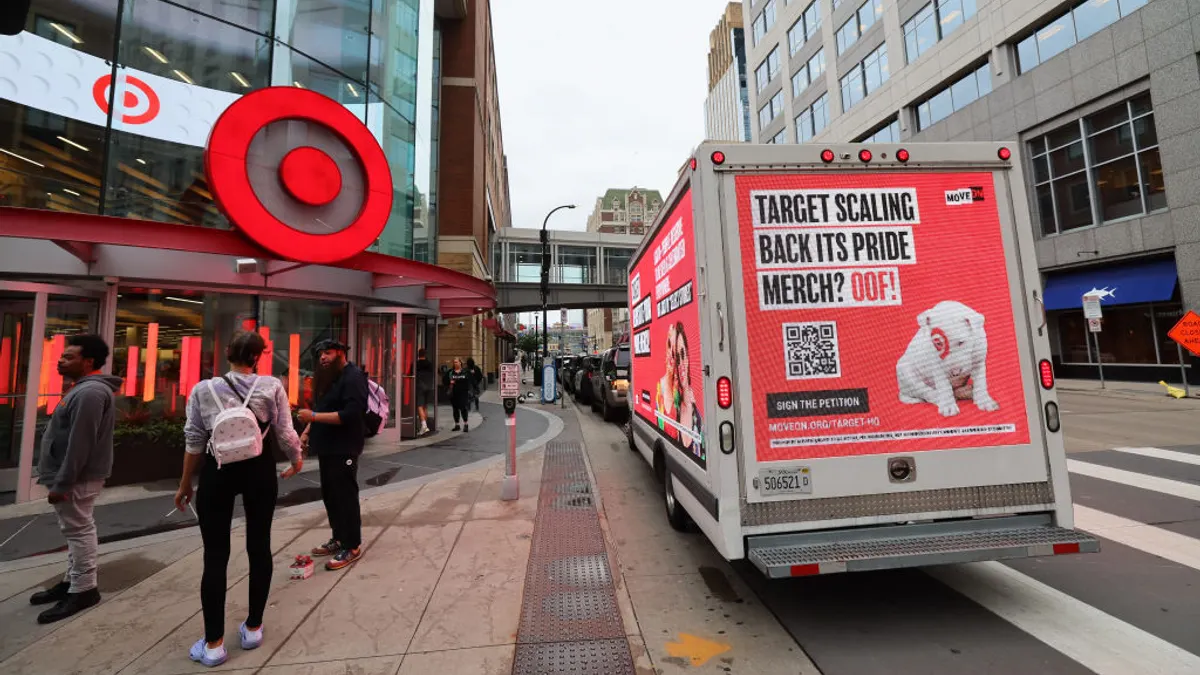Dive Brief:
-
Amazon wowed Wall Street Thursday with a report of $25.36 billion in revenue, sailing past the $24.91 billion in revenue expected by analysts from Thomson Reuters. The e-retail giant made $79 million in Q3, 17 cents per share, compared to an expected loss of 13 cents per share. Shares surged 10% in after-hours trading on the news.
-
Analysts had been expecting Amazon to improve by posting a smaller loss year over year, and its share price soared on the profit performance. There are other signs that Amazon is doing well, including its announcement this week that it would hire many more holiday workers this year, bucking the trend among other retailers that are keeping holiday steady with last year.
-
Amazon’s Q3 results continued the pattern of the company benefiting greatly from its AWS cloud services, which had operating income of $521 million, five times what it was in Q3 2014.
Dive Insight:
Amazon is finally demonstrating what its patient investors have been waiting for: a pattern of consistent growth and profit.
The stock rise is a vote of confidence in Amazon's potential. There are a few essential reasons for that potential, but two basic ones are: the strength of its cloud computing business and the vast potential of global e-commerce. That market totaled $1.32 trillion last year, according to eMarketer, with 21% growth yet this year and more expected in the future.
Amazon’s tilt toward innovation has helped keep its investors patient. Even when it sees failures, like its ill-fated Fire phone, the company pivots without becoming tech or innovation-shy.
It’s hard not to compare Amazon’s fortunes to those of Wal-Mart, which by contrast in recent weeks has seen its stock tumble amid concerns that it will take more work and money to clean up its inventory, stores, and e-commerce than it can handle or that may be possible to jump-start growth.
Others have noted that an improving economy has both workers and customers leaving Wal-Mart for better jobs or more enticing retail environments.
Meanwhile some analysts have pointed out that because Wal-Mart is such a huge company it could have reached a sort of plateau—while there are profits to be had, growth is a tall order.
While a down economy may help make Wal-Mart’s customers sticky, that may fizzle somewhat, while Amazon has its benefit-laden Prime program, whose less-fickle members have now become nearly half of its U.S. customer base. Prime members spend $1,200 there each year on average, while non-Prime customers spend $700, and Amazon has been working hard — throwing a Prime Day sale mid-summer amid other ways to sign up new trial memberships — to collect new ones.
“Amazon is a virtual marketplace that’s kind of like an infinite shopping mall — you can get with one click anything you want to buy,” Columbia University business school professor of retail studies Mark Cohen told Retail Dive earlier this year. “It’s an organization that almost never screws anything up. … And when they do, within two minutes on the phone they apologize and make it about as easy as you can get to make it right.”
But Amazon’s reliance on its cloud-computing business could eventually face stiff competition. Microsoft Thursday also reported big gains in its cloud-computing business, and Wal-Mart took aim at Amazon last week with its announcement that its technology arm, WalmartLabs, will soon open its OneOps cloud-storage solution to the public, making it easier to move data between cloud systems.














